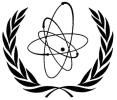Radiation is the energy that travels in waves. It includes visible light, ultraviolet light, radio waves and other forms, including particles. Each type of radiation has different properties. Non-ionizing radiation can shake or move molecules. Ionizing radiation can actually break molecular bonds, causing unpredictable chemical reactions. Humans cannot see, feel, taste, smell or hear ionizing radiation. Unavoidable exposure to ionizing radiation comes from cosmic rays and some natural material. Human exposure to natural radiation is responsible for a certain number of mutations and cancers. Additional exposure above natural background radiation is cause for concern since it may result in otherwise preventable disease.
 The levels of radiation risks and danger.
The levels of radiation risks and danger.
Where does ionizing radiation come from?
Ionizing radiation is matter or energy that is given off by the nucleus of an unstable atom in the process of decaying and reaching a stable (ground) state. This energy is released in the form of subatomic particles (alpha and beta) or waves (gamma and x rays). Most elements and their atoms are not radioactive. A few radioactive elements, like uranium, radium, and thorium, occur in nature. Humans, through nuclear power, bomb production and testing, have created and released manmade radioactive elements (radionuclides) that were previously unknown in the environment. Through mining and industrial processing naturally radioactive elements like uranium and thorium have been released to flow through the natural systems on which life depends. These substances were, with few exceptions, geologically isolated from the environment under layers of shale and quartz before human beings dug them up by the ton and contaminated the biosphere. Because of poorly conceived and implemented nuclear technologies, such as atomic energy, bomb production and reprocessing, we and our descendants are left with a legacy of radioactive waste with no proven isolation method.
…of Alpha, Beta and Gamma
Putting into retrospective, alpha particles are perceived as high energy, large subatomic structures. They can’t travel very far and can be stopped by a piece of paper or the human skin. However, alpha particles hit hard and are capable of doing a great deal of damage to the cells they rip through. Once inhaled, ingested or otherwise taken inside the body (as through a cut in the skin), they have the power to tear through cells in organs or blood, releasing their energy to surrounding tissue and leaving extensive damage in their wake. A single track of a single alpha particle can deliver a large dose of radiation to a cell. Plutonium is an alpha emitter. Other alpha emitters include radon gas, uranium, and americium.
Beta particles are electrons. They are just a fraction of the size of alpha particles and can travel farther and are more penetrating. Betas pose a risk both outside and inside the body, depending on their energy level. External exposure can result in beta penetration through the surface to the most sensitive layers of skin. Inhalation or ingestion of a beta emitting radionuclide poses the greatest risk. Externally, a half-inch of Plexiglas or water shielding can generally stop a beta. Strontium-90 and tritium are two beta-emitting radionuclide routinely released from nuclear power reactors during normal operation. Our bodies often mistake strontium-90 for calcium, collecting it in our bones that make our new blood cells. Once there, it increases our risk of bone and blood cancers like leukemia. Every one of us has strontium-90 in our bodies as a result of nuclear bomb testing. Tritium is radioactive hydrogen, which binds where normal hydrogen does. Hydrogen is the most abundant element on the earth, and is a component of water, which cushions our genetic material (DNA). Tritium can bond in this water, irradiating our DNA at very close range.
Gamma rays are the most penetrating type of radiation and can be stopped only by thick lead blocking their path. Cesium-137 is a gamma emitter often released from nuclear reactors. It mimics potassium, collecting in muscle. Iodine-131 and Iodine

